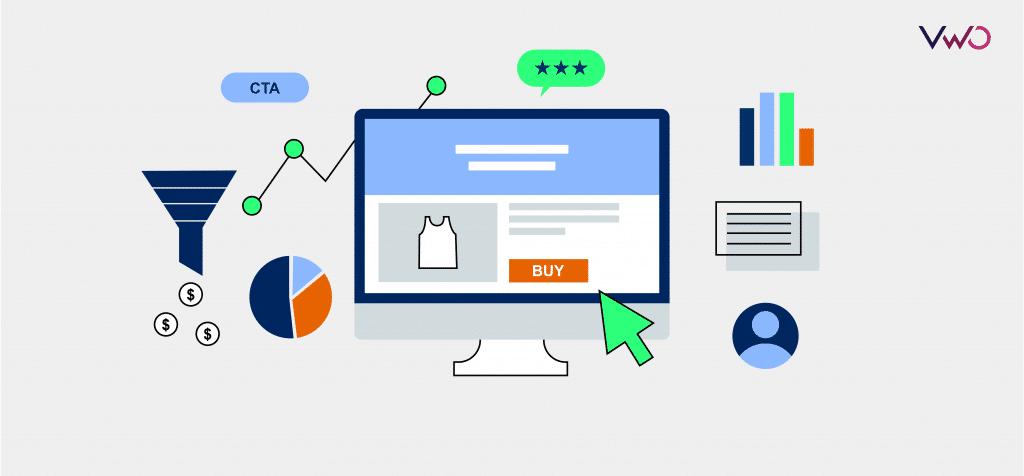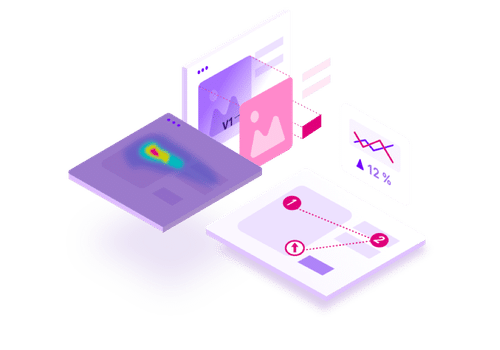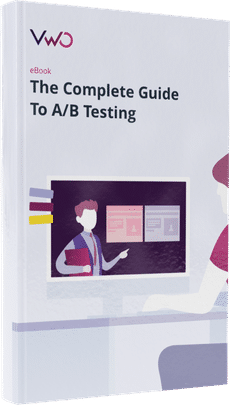A CRO Guide for Marketers
As a marketer, pulling online traffic is one part of your job. But all that traffic you produce via ad campaigns, SEO, and SEM efforts doesn’t guarantee conversions. As a result, it has always been nothing less of a quest for digital marketers to identify ways that can help them generate high-quality leads to achieve better conversions.

Download Free: Conversion Rate Optimization Guide
This is where CRO marketing enters.
In this blog post, we will focus on what CRO marketing is, the best strategies to pick up and prioritize, and the tools that are available for you to leverage CRO’s true power.
Table of Contents
- What is CRO marketing?
- What are CRO marketing goals?
- CRO strategy to get started: focus on low-hanging fruits
- Prioritize your strategies
- CRO marketing tools
- Best practices
- CRO marketing: on a rescue mission for the complex journey of the modern customer
What is CRO marketing?
Conversion rate optimization marketing or CRO marketing is crucial because optimization enables your marketing efforts to edge over those who do not practice CRO marketing efficiently.
CRO marketing is a process of increasing the percentage of your website visitors taking the desired action (such as subscribing to mailing lists, signing up for a free trial, filling out a form, or downloading an ebook).
These actions could vary from meeting your main business conversion goal to attaining micro conversions. For instance, visitors making an online purchase on an eCommerce store could be your primary goal, and clicking the ‘add to cart button, which would move them ahead in the sales funnel, could be a micro-conversion.
So, how can you get more visitors to convert? The first step is not looking at the visitors but looking within your company to identify your business goals.
What are CRO marketing goals?
First thing first. You must know what you want to achieve with your optimization exercise. You need to zero in on a set of goals, and for that, you need to sit with your stakeholders and identify the critical metrics (also known as KPIs) that define your business goals. Once you have identified the goals specific to marketing, you can use the A/B testing framework recommended below to test your optimization ideas.
- Do your research: Utilize Google Analytics and behavioral analysis tools, such as heatmaps, session recordings, and surveys, to gather behavioral insights from your existing website traffic.
- Identify the top key metrics that directly impact your business conversion goals—for example, free trial sign-ups, online purchases, etc. Don’t forget to make observations of these data as they will help you compare your conversion rates pre and post-experimentation.
- Construct hypotheses based on each of the observations and combine them wherever required. You can fill the following to create and articulate a hypothesis: “I believe______, and if I am right then _______, because_________.” The latter part of the hypothesis is the qualification of the outcome that you expect and why you think so. For example, I believe that adding customer testimonials on key pages will address the low rate of audience purchasing because testimonials will establish the credibility of our product/service as social proof. You can prioritize your hypotheses using the ICE model for efficient execution.
- Run your experiment: You can utilize a testing system with analytics like VWO to measure the KPIs against the current baseline and desired goal. For example, to test the impact of social proof on your conversions, run an A/B test, wherein your control could be a landing page without testimonials and a variation of the same landing page with testimonials.
- Analyze your test results: Study your test results for any uplifts in conversion rates (including micro-conversions). It’s imperative to run a test till it reaches 95% statistical significance, which yields relevant results. Also, you should run a test for a minimum duration that accounts for traffic variations for both weekends and weekdays. Do remember to document your result metrics for subsequent experimentation activities.
In the below section, I’ve listed some common and easy-to-implement tests that can kick off your CRO journey smoothly and are likely to give you some quick wins.
CRO strategy to get started: focus on low-hanging fruits
Your high-traffic website has enormous potential to turn your visitors into customers. You only need a direction on how to go about the optimization process. Your CRO strategies could be both site-wide and visitor-level.
Here is a list of some strategies that you can implement:
- Rule of congruence: Congruence in marketing can be explained as the alignment and uniformity of your brand voice across channels in the most intuitive way. For instance, your ads should match the image on your landing page, leaving no room for confusion in your prospects’ minds. The last thing you want is for your prospects to doubt your brand. You can determine and confirm what drives more traffic—the same image on the ad and the landing page, or two different images.
- Use CTAs anchored within the blog text: According to an experiment by HubSpot, they captured between 47% and 93% of leads on one of their posts, using the text-based CTA. You can highlight your text-anchored CTAs within your blog posts or guidebooks. Test whether they work in favor of your conversions.

- Create lead flows: A lead flow in CRO defines the flow in which a lead is captured in exchange for an offer. It is a pop-up or a slide-in box that appears while you interact with a web page. The idea of this pop-up is to offer something to add value to your experience. But it can be annoying, as it hinders your focus while you are reading on a screen to solve a problem at hand. Yet, in a few cases, it has worked well. For example, the below-shown lightbox drove a humongous 1,375% more sign-ups as compared to the sticky sidebar form on the landing page.
Lightbox form:

Sidebar form:

- Optimize your conversion path: Remove the friction from the sales process for your high-intent visitors. These are those visitors that land on your website either through paid advertisements or direct search with an intent to convert. You can remove the friction by optimizing your conversion paths for different visitors. Conversion path is a process wherein your website visitor becomes a marketing-qualified lead (MQL). For example, a few visitors might want to get down straight to work. In a B2B setup, your prospects might not want hand-holding across a typical, step-by-step buyer’s journey that you have crafted. Instead, they would need a call with a sales rep by jumping right on requesting a demo than a free trial.
Analyze visitor behavior, note these observations, and run experiments to find the best conversion path for high-intent visitors. A healthy conversion path for your website constitutes:
- Digestible content with a clear context: Address a specific pain point with a solution in your content.
- Knowledge of buyers’ personas: You should know who is your ideal prospect/customer. For example, you should know their demographics, psychographics understanding, etc.
- Enticing CTAs: Action-oriented, congruent, and clear CTAs are the most enticing ones. But again, never overestimate your assumptions. You might end up shooting yourself in the foot without backing your hypotheses with data. Utilize the behavior analysis tools to embed CTAs in the right places on your website.
- Optimized thank you pages: The conversion path comes to a full circle with an optimized thank you page. It will fulfill the promise you made to your visitor on your landing page and allow you to push them further in their buyer’s journey.
5. Optimizing your high-performing content: Leaving your high-performance content unattended is akin to killing your conversions slowly. For example, your high-traffic blog posts should trigger you to push these visitors into your marketing funnel. You can do so by adding CTAs pertaining to your business within the context of your content in the most logical and intuitive way. This approach is likely to yield better conversions.
You can optimize your high-converting landing pages as well if they do not drive traffic. To do so, fix your SEO with semantic indexing and entities, which might result in an organic push from Google. Of course, this does not guarantee a high ranking on Google. However, you can run an experiment to see if that works for your high-converting content pages.
6. Retargeting to re-engage website visitors: Your visitors may jump off your website for many possible reasons. However, you can retarget these users by using push notifications and also by optimizing your landing page.
- Web push notifications (like VWO engage): These notifications are pretty easy to build and do not need much technical skill as well. You can utilize push notifications to encourage visitors to keep coming back to your website, thereby increasing conversions.
- Optimizing your paid ads: You can optimize your ad content with a well-crafted copy, engaging images, videos, and a compelling offer to target the lost visitors. With behavioral insights in place, you can also utilize website personalization for retargeting. You can utilize retargeting tools such as Retargeter and Adroll.
These strategies lay the foundation of your CRO efforts. But lack of prioritization before implementation can leave you befuddled with the results. To gain efficiency, prioritize your strategies in a way that they can be implemented logically.
Download Free: Conversion Rate Optimization Guide
Prioritize your strategies
Assign a number on a scale of 1 to 10 to every strategy that you pick for your optimization exercise, using the impact, confidence, and ease (ICE) scoring model. A higher score would mean that the strategy should be picked and implemented early on in the pipeline.
Now that you have a list of prioritized strategies with you, ready to be implemented, you must realize that strategies alone can’t help you succeed in your optimization journey. You will also need the right set of tools.
CRO marketing tools
Evaluate your CRO tools well before putting them to use. Here is a recommended list of tools you can utilize for your CRO efforts.
Best practices
Your customers’ response and, of course, trends in your business goals should drive your CRO efforts. However, there are a few best practices that any CRO team should follow:
- Always have your ideas, assumptions backed by data, and test them before making any changes to your website.
- Utilize the ICE model to prioritize and rank your CRO strategies as discussed in the above sections.
CRO marketing: on a rescue mission for the complex journey of the modern customer
An efficient CRO strategy takes care of the complicated journey of a modern, 21st-century customer on your website. For example, a visitor’s journey on a travel website is not as straightforward as one would assume.
As shown in the below image, the flow involves several nuances that need to be taken care of while creating a website’s CRO strategy.

Identify the steps where your visitors get lost and break them down into small and easy steps to move things seamlessly. Never assume that your prospects or even customers know everything. Instead, always back your observations with data, empathize with your personas, and implement changes only after testing your experimentation hypotheses.
CRO marketing is not a one-time activity but a persevering quest to be better than what you were yesterday. The best part about CRO marketing is that it does not interfere with your other existing marketing strategies; instead, it facilitates them to convert better.
So go on, embark on this exciting journey! Happy optimizing!


















